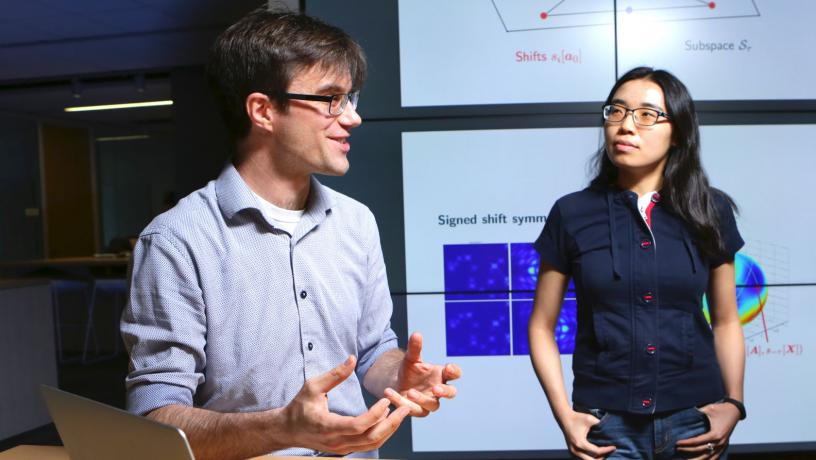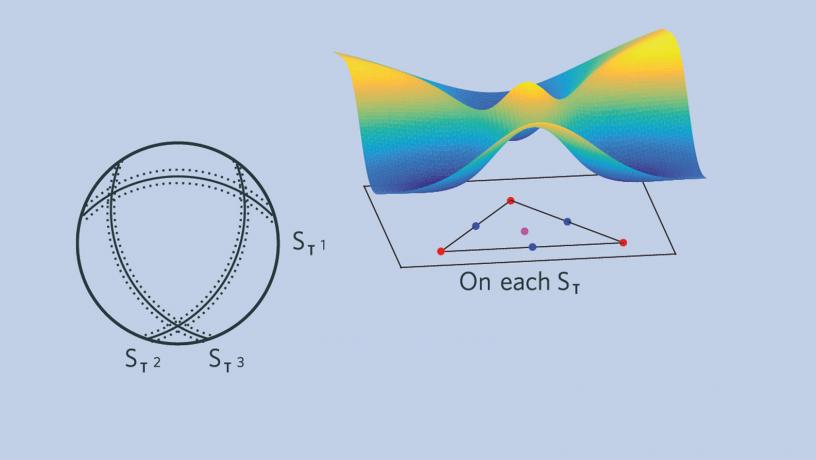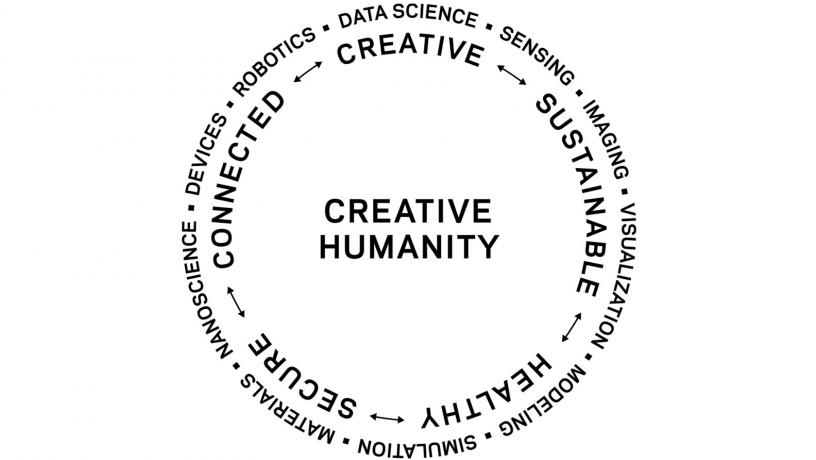The Big Picture in Data Science

John Wright (left) with student

Optimization landscape over the sphere, illustrating critical points

Imagine a world where the development of data science theory leads to transformative advances across all areas of life.
Twenty years ago, the term “data science” didn’t exist; today, the field is transforming society. But even as scientists and engineers forge ahead with new applications, the theoretical foundations to help form and guide practice—and advance accuracy and progress—have yet to be established. Generating this core knowledge is key not only for addressing current issues, like unreliable data, but also for unleashing the next wave of innovation.
There’s a great art to pairing the correct mathematical foundation with specific applications, says John Wright, associate professor of electrical engineering. “Especially for socially critical applications, we better know what we’re doing.”
The importance of marrying theory and practice became clear to Wright while pursuing a math-focused PhD in electrical engineering.
“I saw the beauty and power of mathematics,” he says. “It gave me a whole new perspective on problems—that there could be methods that are efficient and practical, and also understood mathematically.”
Wright brings this big-picture approach to his role as head of the Transdisciplinary Research in Principles of Data Science (TRIPODS) Institute. Based at the Data Science Institute, TRIPODS gathers researchers across disciplines to devise methodologies for processing and analyzing data on a massive scale, through research and educational initiatives (including graduate-level curricula).
Wright’s collaborations have already produced knowledge discovery in areas like physics, materials science, and public health. Ongoing projects include data analysis with scientists from the Laser Interferometer Gravitational-Wave Observatory (LIGO), which recently made the first, Nobel Prize–winning detection of gravitational waves, and with Electrical Engineering Chair Peter Kinget on developing low-power circuits allowing cell phones to tap into unused wireless spectrum without draining their batteries.
Looking to the future, Wright is excited to tackle theory and applications of deep learning and to branch out into areas such as neuroscience.
“We’re building a language and tool set that enables practitioners to express problems and develop effective methods whose properties are clearly understood,” he says. “We dare to hope for new things.”
